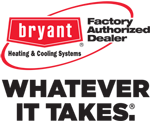FAQ's About Furnaces, Part 1 of 3

February 27, 2016
Frequently asked questions about furnaces, Part 1 of 3, by the best air conditioning repair company in McKinney, Don Trotter Heating and Air Conditioning Inc.
The installation experts from Don Trotter Heating and Air Conditioning, Inc., the number one air conditioning repair company in McKinney, TX, are going to start a discussion answering some of the most frequently asked questions about furnaces, Part 1 of 3.
When the time arrives to upgrade or replace your existing furnace in your heating and air conditioning system, there are many things you should consider first in order to make the right decision for your family and home. Some of those things, besides the different brands, include such things as the different types of furnaces, the different types of fuel sources available to our region, understanding some of the different terminology associated with this area of your heating and air conditioner system, etc. Our installation experts here at Don Trotter Heating and Air Conditioning Inc., the number one air conditioning repair company in McKinney, are going to help clear the air on some of the most frequently asked questions in regards to this topic. We would like to start by having you ask yourself a few questions, some of which you might come across when researching or dicussing furnaces. Do you know what the difference is between a single-stage and two-stage variable speed 80% gas furnace? Do you know which different fuel sources are available for different furnaces? What is the AFUE rating associated with the furnace you are most interested in?
The installation experts here at the number one air conditioning repair company in McKinney, TX would first like to explain what exactly a furnace is intended for. A furnace is designed to raise the temperature inside of your home to a certain comfortable degree when the outdoor air is cooler than inside by adding heat to the air as it travels through your system. A furnace is responsible for not just providing heat to your home but for also another important feature; distributing the filtered, heated or cooled air throughout the system and into your home. There are a few more technologically advanced furnaces today that come with more features; those furnaces are most generally associated with the highest efficient complete systems such as the Bryant Evolution line of systems. These highly rated systems have many extra benefits and functions which will be discussed at a later time so check back soon for more information.
As you begin looking into upgrading your furnace, you will notice, regardless of type or brand, different ratings that are associated with every furnace. Try not to let the different ratings confuse or sway you into potentially purchasing an inferior product; as most ratings require proper equipment sizing, matching and installation procedures with all other components of the system as well to meet the rating that is shown on the label. One rating that you will see is the AFUE rating; which determines that specific furnaces’ annual fuel-utilization efficiency, which is measured or shown by a percentage. An AFUE rating is described by the EPA (Environmental Protection Agency) as the ratio of annual heat output of the furnace compared to the total annual fuel energy consumed by a furnace in a given year. The higher the percentage rating of that furnace, the more heat the furnace can extract from each unit or “therm” of gas; which also lowers the environmental impact of the combustible gasses emitted through the venting from the furnace while heating your home.
To better explain this rating, take for example an 80% natural gas Bryant furnace you purchased from one of our team members. This means 80% of the fuel source consumed by this furnace will be turned into heat for your home with the other 20% escaping through the flue-stack, an exhaust vent or any type of piping used in the exhausting of combustible gases inside a system to the outside air. The all electric style furnaces have an AFUE rating of anywhere from 95%-100% as there is little to no energy lost during conversion, or flue-stack loss. There are a few other ratings and qualifications that you may come across when comparing different furnaces such as the SEER rating and sometimes the HSPF rating (Heating Seasonal Performance Factor), depending on the type of furnace. The HSPF rating is a standard measurement of electrical efficiency as applied to heating with a heat pump. A higher HSPF rating translates to a more efficient product. Another great label to keep an eye out for with different furnaces is the Energy Star label; which is a program that was launched by the U.S EPA to ensure the products bearing its logo have met the stringent requirements for the efficient use of natural resources.
Our installation experts would quickly like to help go over some terminology you might come across when discussing or researching furnaces that may seem a bit confusing. When you begin looking into the different sizes of a furnace, the term or unit BTU will often be used. BTU, or British thermal unit, is a unit of measurement of energy; one BTU is equal to the amount of energy used to raise the temperature of one pound of water one degree Fahrenheit. Another term is staging, such as single-stage or two-stage; which is referring to the different levels of heat output the furnace is capable of operating at. Finally, another common term you will see associated with furnaces are speeds; such as a single-speed furnace, up to a variable speed furnace. The speeds of a furnace are not referring to the staging at which it can operate but the speed of which the blower motor can operate.
Join our next few posts as the highest ranked air conditioning repair company in McKinney, TX further discusses more frequently asked questions about furnaces; such as different fuel sources for furnaces in our region, staging and speeds, and some of the benefits of these different furnaces.
Three generations of our family serving yours since 1970.
Don Trotter Heating and Air Conditioning Inc.
Proudly offering our services to the communities of the entire North Dallas metroplex.
(Source www.houselogic.com)
(Source www.consumersearch.com)
(Source http://energy.gov)
(Source www.consumerreports.org)
(Source www.energystar.gov)





